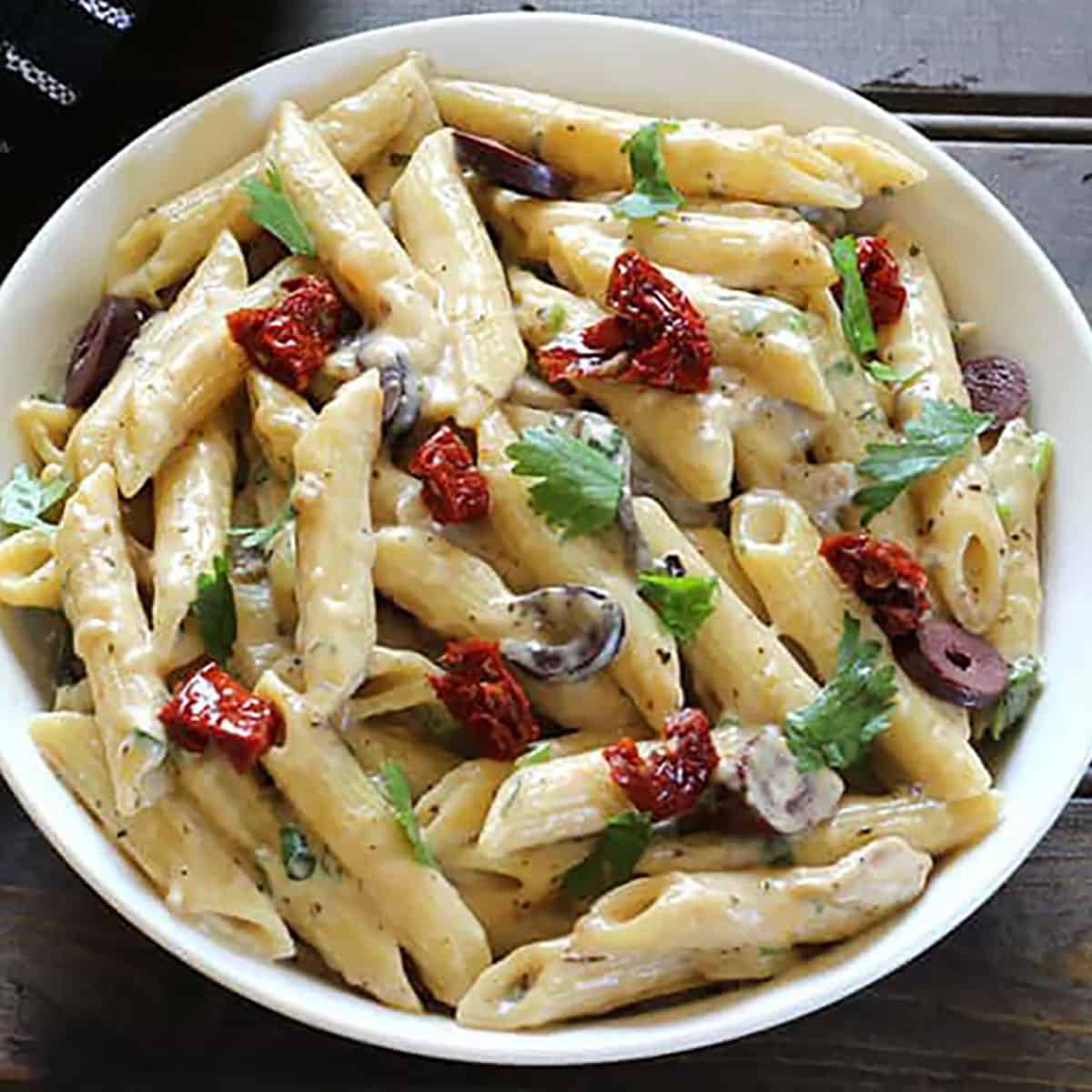Chicken in Basil Cream Sauce a Comforting Classic is a delicious recipe that combines amazing flavors and textures.
Chicken in basil cream sauce represents the epitome of comfort food elegance—a dish that feels simultaneously luxurious and familiar. This recipe combines tender, perfectly cooked chicken with a rich, herbaceous cream sauce that clings beautifully to pasta, creating a meal that satisfies on every level. The magic lies in the balance between the bright, aromatic basil and the rich, savory cream base.
The History of Cream-Based Sauces
Cream sauces have a long history in European cuisine, particularly in French and Italian cooking. The French béchamel (one of the mother sauces) and Italian Alfredo both form the foundation for many cream-based dishes. Our basil cream sauce draws inspiration from these traditions while incorporating the fresh, herbal notes that characterize modern cuisine.
Basil itself has been cultivated for over 5,000 years, originating in India and spreading through Asia and Europe. It was considered a royal herb in ancient Greece and has long been associated with love, protection, and culinary excellence. The combination of basil with cream represents a marriage of Mediterranean freshness with French indulgence.

Selecting Quality Ingredients
Chicken: Use organic, free-range chicken breasts when possible. They typically have better texture and flavor. Pound them to even thickness for consistent cooking—this prevents dry edges and undercooked centers.
Basil: Fresh basil is essential. Look for bright green leaves without black spots. Genovese basil offers the classic sweet, slightly peppery flavor ideal for this dish. For more complex flavor, try combining sweet basil with a small amount of Thai or lemon basil.
Dairy: Use heavy cream (at least 35% milk fat) for the richest sauce. For a lighter version, half-and-half works but may require reduction or slight thickening. Freshly grated Parmesan cheese melts better and offers superior flavor compared to pre-shredded varieties.

Broth: Homemade chicken broth provides the best flavor foundation. If using store-bought, choose low-sodium versions to control seasoning. For vegetarian adaptation, vegetable broth works well.
The Science of Emulsification
Cream sauces are oil-in-water emulsions stabilized by milk proteins and emulsifiers naturally present in cream. Understanding this helps prevent breaking (separation). Key factors:
• Temperature control: Avoid boiling once cream is added, as high heat can cause proteins to coagulate and separate from fat
• Acid management: Highly acidic ingredients can curdle cream. Add them gradually and off direct heat
• Thickening: Reduction (simmering to evaporate water) naturally thickens sauces. Starches (like cornstarch) can provide additional stability
• Fat content: Higher fat creams are more stable against breaking
For our basil cream sauce, we build flavor by sautéing aromatics, deglazing with broth, then incorporating cream off the boil. Parmesan adds both flavor and emulsifying properties due to its protein and fat content.
Technique Mastery
Chicken Preparation: Pounding chicken serves two purposes: it tenderizes by breaking down muscle fibers, and it creates even thickness for consistent cooking. Place chicken between plastic wrap or in a zip-top bag before pounding with a meat mallet, rolling pin, or heavy skillet.
Pan Searing: Pat chicken completely dry before searing. Oil should be hot but not smoking. Don’t overcrowd the pan—cook in batches if necessary. Allow a golden crust to form before flipping—this creates fond (browned bits) that add depth to the sauce.
Sauce Development: After removing chicken, deglaze the pan with broth, scraping up all the flavorful browned bits. Simmer to reduce slightly before adding cream. Incorporate dairy off direct heat to prevent curdling. Return to gentle heat after addition.
Herb Incorporation: Add most basil at the end of cooking to preserve its bright flavor and color. Reserve some fresh leaves for garnish. For more infused flavor, add a basil stem during simmering and remove before serving.
Variations and Customizations
This recipe adapts beautifully to different ingredients and dietary needs:
Protein Options: Substitute chicken with turkey cutlets, pork medallions, or even firm-fleshed fish like cod or salmon. For vegetarian version, use portobello mushrooms or cauliflower steaks.
Herb Variations: While basil is classic, try combinations with parsley, tarragon, or dill. For a Provençal twist, use herbes de Provence. For Asian influence, substitute basil with Thai basil and add a touch of ginger and soy sauce.
Cream Alternatives: For dairy-free version, use cashew cream or coconut milk. Note that coconut milk will impart its distinctive flavor. For lighter sauce, use evaporated milk or Greek yogurt (add off heat to prevent curdling).
Vegetable Additions: Incorporate spinach, sun-dried tomatoes, mushrooms, or asparagus. Sauté vegetables after cooking chicken before making the sauce.
Wine Pairing Recommendations
The rich cream sauce and herbal notes pair beautifully with several wine options:
• White Burgundy/Chardonnay: Buttery notes complement the cream sauce
• Sauvignon Blanc: Herbal characteristics echo the basil
• Pinot Grigio: Crisp acidity cuts through the richness
• Light-bodied reds: Such as Pinot Noir, served slightly chilled
For non-alcoholic pairings, try herbal iced tea, sparkling water with lemon, or a creamy tomato juice cocktail.
Storage and Reheating
Store leftovers in an airtight container in the refrigerator for up to 3 days. The sauce may separate slightly upon refrigeration—this is normal.
To reheat: Place in a skillet over low heat, stirring frequently. Add a splash of cream or broth to help re-emulsify the sauce. Avoid microwave reheating, which can cause further separation and rubbery chicken.
This dish doesn’t freeze well due to the cream sauce, which may separate upon thawing. If necessary, freeze without sauce and prepare fresh sauce when serving.
Nutritional Considerations
While rich, this dish can be modified for various dietary needs:
Lower fat: Use chicken broth instead of cream thickened with cornstarch, or use evaporated milk. Reduce cheese amount.
Lower carb: Serve over zucchini noodles, spaghetti squash, or shirataki noodles instead of pasta.
Dairy-free: Use plant-based cream alternatives and nutritional yeast instead of Parmesan.
Gluten-free: Ensure broth is gluten-free and serve with gluten-free pasta.
To boost nutritional profile, add extra vegetables like spinach, broccoli, or peppers. Use whole wheat pasta for added fiber.
Serving Presentation
Presentation elevates this comforting dish to restaurant quality:
• Twirl pasta neatly with tongs for height
• Slice chicken on the bias and fan around pasta
• Drizzle extra sauce over everything
• Garnish with fresh basil leaves and Parmesan shavings
• Add a sprinkle of freshly cracked black pepper
• Serve in warmed bowls to maintain temperature
Accompany with crusty bread for soaking up sauce and a simple green salad with vinaigrette to cut the richness.
Cultural Context
While not authentically Italian, chicken in basil cream sauce represents Italian-American cuisine at its best—adapting Old World techniques and flavors to New World ingredients and preferences. It exemplifies how immigrant cuisines evolve in new environments while maintaining their essential character.
The dish also reflects late 20th century culinary trends toward cream-based pasta sauces, which gained popularity in American restaurants in the 1980s and 1990s. Today, it stands as a classic of home cooking—approachable yet impressive, familiar yet special.
Final Thoughts
Chicken in basil cream sauce offers the perfect balance of comfort and sophistication. Its rich, creamy texture comforts like a favorite blanket, while its bright herbal notes elevate it beyond ordinary weeknight fare. The technique involved—proper searing, deglazing, and sauce-making—provides a foundation for countless other dishes.
This recipe rewards attention to detail while forgiving minor variations. It invites creativity while providing a reliable framework. Most importantly, it creates moments of shared pleasure around the table—the true purpose of any great recipe.
We hope this becomes a cherished part of your cooking repertoire, adapting to your tastes and occasions for years to come.

Chicken in Basil Cream Sauce a Comforting Classic
Ingredients
Method
- Pound chicken breasts to even thickness (about 1/2 inch)
- Marinate in milk with garlic powder, onion powder, salt, and pepper for 15 minutes
- Pat chicken dry with paper towels
- Heat olive oil in a large skillet over medium-high heat
- Cook chicken for 5-7 minutes per side until golden and cooked through
- Remove chicken from skillet and set aside
- Reduce heat to medium and add butter to the same skillet
- Sauté garlic for 30 seconds until fragrant
- Add chicken broth and bring to a simmer, scraping up browned bits
- Stir in heavy cream and Parmesan cheese
- Simmer for 3-5 minutes until slightly thickened
- If desired, mix cornstarch with water and stir into sauce to thicken further
- Return chicken to the skillet and spoon sauce over it
- Stir in fresh basil and cook for 1-2 more minutes
- Season with additional salt and pepper to taste
- Serve over pasta with extra Parmesan and basil garnish


